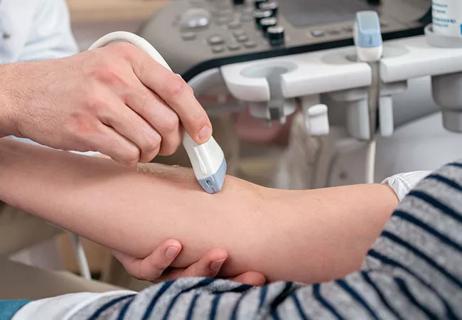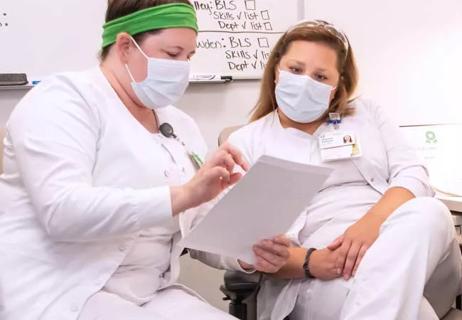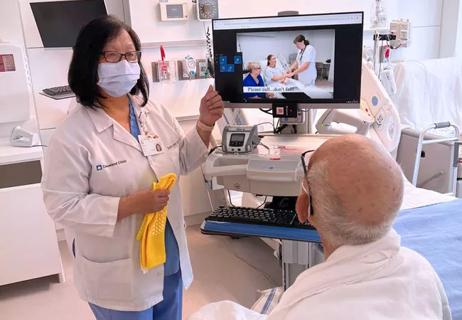Advertisement
Research looks at a tool for IAD documentation

When assessing and treating skin injuries in hospitalized patients resulting from incontinence, it’s important for nurses to determine the etiology and degree of severity of the wounds. Investigators looked into the effectiveness of using a tool designed to evaluate incontinence-associated dermatitis (IAD).
Advertisement
Cleveland Clinic is a non-profit academic medical center. Advertising on our site helps support our mission. We do not endorse non-Cleveland Clinic products or services. Policy
The detection and treatment of IAD in hospitalized patients should happen in its early stages before complications occur. One potential complication is the development of a hospital-acquired pressure injury.
Moisture associated with IAD can make patients susceptible to pressure injuries, and it can be challenging for nurses to differentiate between a pressure injury and an IAD-related injury. Without the ability to clearly discern between the two, they may not provide the proper treatment. The Centers for Medicare & Medicaid Services does not reimburse for higher stage hospital-acquired pressure injuries, so if the injury is documented incorrectly, the hospital may suffer financial penalties.
“Many times, damage from moisture can look like a stage 2 or 3 pressure injury, but it’s not,” says Mary Montague, MSN, APRN, ACNS-BC, CWOCN, Manager of the Wound Care Consult Team at Cleveland Clinic’s main campus.
So, Montague and other nurses at Cleveland Clinic set out to assess the effectiveness of the Incontinence-Associated Dermatitis and its Severity Instrument (IADSI) — a tool published in 2010 that helps guide the identification of IAD skin injuries. They wanted to determine if educating nurses on this tool would improve documentation of IAD in the electronic medical record and if it would enhance nurses’ ability to differentiate IAD and pressure injuries. They finished the 2-cohort pre- and post-intervention research study in 2016.
Advertisement
The sample consisted of 89 patients on three medicine units at Cleveland Clinic’s main campus. Patients had skin injuries, wounds or irritation on their anterior/posterior skin surface between the umbilicus and mid-thigh areas. In the pre-intervention period, a wound expert assessed each patient’s skin and assigned a score using the IAD tool. The patient’s medical record was then examined to determine what clinical nurses had documented for the patient’s skin condition.
The intervention involved clinical nurse education on skin assessment, correct use of the IAD tool and documentation of IAD based on the IADSI in the medical record. In the post-intervention period, wound experts independently assessed patients’ skin and reviewed nurses’ documentation to determine if clinical nurse accuracy in documenting incontinence-related skin injury improved.
In analysis, investigators found that nurses’ assessments of patients’ skin wounds were more likely to match the wound expert’s assessment after they were educated on and implemented the IAD tool.
“The tool is not complicated but can be confusing,” Montague says. “Knowing its nuances is helpful and education is key.”
Montague says that research findings have not yet been translated into clinical practice, but that there may be value in revising nursing protocols to integrate the IADSI into practice. The challenge may be to determine the best method of incorporating the IADSI score into the electronic medical record.
In addition to Montague the research team included Nancy Albert, PhD, CCNS, CCRN, NE-BC, FAAN, and Matthew Karafa, PhD.
Cleveland Clinic’s 14th annual Nursing Research Conference is May 2 – May 3. Register now!
Advertisement
Advertisement

Fellow critical care nurses welcome additional support and expertise

Study shows ultrasound can be valuable tool for improving patient satisfaction by reducing failed IV insertions

New system uses vital signs to predict need for further intervention

Findings reveal personal and professional factors that influence nurses’ interest in medical research

Nurse scientists bridge divide between bench and bedside

Individual and population factors play a role

Study looks at cardiopulmonary arrest and activation rates

Video education and nurse-led reinforcement help with fall risk awareness